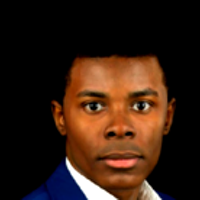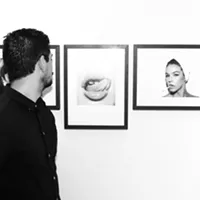Gavin Edwards' New Interactive Book of Art Pairs Readers with Artists of All Stripes
Make corpses exquisite again
By Ryan Pitkin @pitkin_ryanGavin Edwards was never what you would call a typical writer.
As a writer and editor with Details magazine in the '90s, and later with Rolling Stone, he was always going after the untold story. He's traveled from New Zealand to Bahrain to do so, and found new angles to cover media-saturated events back home, like the time he caught a city bus to the red carpet of the Grammys to interview celebrities hopping out of limousines on the same street.
So it was no surprise that when Edwards, who now lives in Charlotte with his wife and kids, started writing books, they weren't your typical biographies or longform journalism pieces. Books like The Tao of Bill Murray and 'Scuse Me While I Kiss This Guy and Other Misheard Lyrics are far from your grandfather's (or father's) literature.
That fact stands even more so with his newest release, The Beautiful Book of Exquisite Corpses, a collection of partially finished art to be finished by the reader and friends.
No, the illustrations do not depict dead bodies (unless you want them to); exquisite corpse is an art style started in 1920's France in which a picture is started by one artist, folded in on itself, and then finished by another patron who only works from the small connecting lines left by their partner(s) as clues.
Edwards recruited a lineup of artists, authors, sports figures and critics as mish-mashed as a finished exquisite corpse art piece to get things started, including local artists, famed musicians, television critics and everyone in between.
Edwards will host a party to celebrate the release of the book on August 28 at Goodyear Arts in Camp North End. Before that, he came by the Creative Loafing office to talk about what it was like to curate a book of unfinished art, why it was important to include Charlotte artists and why Tom Hanks is the next in line to get the Bill Murray treatment.
Creative Loafing: You've clearly always had an alternative way of approaching your writing, from your journalism to the books you've published. What inspired that?
Gavin Edwards: It came out of rock 'n' roll. I was always interested in other things. One of the first big magazine features I ever wrote was something for Wired on artificial languages. I definitely came from that do-it-on-the-ground-level style — anyone should be able to learn three chords and put it together — and I try to bring some of that ethos to what I do.
Was it a natural progression from writing journalism pieces like that to publishing out-of-the-box books like The Beautiful Book of Exquisite Corpses?
Yeah, but I think some of the magazine stuff still plays in. This book is more like doing a magazine than anything else I've ever done bookwise. It's like I'm commissioning 100 pieces from people, and it's hopefully people who want to play and have fun with it.
What sort of responses did you get from those people?
Moon Unit Zappa said, "I do this every day with my kid, pretty much." So she was just really happy to get a chance to do it. And other people who I've known like Emily Nussbaum, who's a TV critic at the New Yorker, I've known her forever, and I just know that she's doodling all the time. And I'm like, "OK, could you doodle and could you do it in this amount of space for me?" And then you have some people who say, "Sure, I'd love to," and then wander off and you never hear from them again.
It's such a wide range of people, from Rivers Cuomo to Lenny Dykstra. How did you decide whom to reach out to?
Some of it is just using my personal Rolodex. In the case of Rivers Cuomo, I actually edited him a couple times. He wrote a couple pieces for me at Details when Weezer was just starting to break.
Some of it was stuff like that, or cartoonists who I know and I know they could do a wonderful job, like Peter Kuper who did that great, Kafkaesque thing with the heavy blacks. He's somebody who has worked for MAD Magazine, he does brilliant comic books, and I edited some comics he did at Details back in the day, so it's an easy phone call to make and say, "Would you like to do this?" and he was really kind and all for it.
But I also wanted it to not just be my friends, because that seems limiting both artistically and demographically. It's kind of lazy. So I made a real concerted effort to say that there's lots of talented young people who I may not have firsthand experience with but let's make sure there's as many women artists as possible, and there's artists of color. It's a joy to go onto people's Instagrams and [find them there]. For a lot of people it's their first published thing, so it's nice to have the mix where you can do that. You've got Moby here and then you've got somebody who's never done anything before and then it makes it richer that they're right next to each other.
When and how did you become interested in the exquisite corpse exercise?
Gosh, 1988? I took a college art history class and it was on Dada and surrealism, and it was just like discovering, "Oh, there's all these artists who broke the rules in this really spectacular way." And so I just started playing with it at that point. But then you do it and you put it away and you don't think about it for a long time.
The whole exercise is like a visual Mad Libs.
Yeah. I've got a young son and it was such a joy to hear him play Mad Libs in the backseat with a friend where every single word was "butt." So, there's an adjective. "Butt." That's one way of doing it. If what you want to do with this is color it or do something else, make it your own. It's like the raw material for people to play with now.
So it's open to interpretation and rule-bending, but what's your ideal way to spend a night with this book?
I think you want as mixed a crowd as possible. Before the book existed I would do this with blank sheets of paper. There was one particularly memorable party where there were all these museum curators and there's PhDs there, and the kids are getting bored and I took it upon myself to go like, "OK, we've got blank paper and pencils, let me show you this incredibly fun game." And they get into it, and then the PhDs and the curators start seeing what's going on and they want to join in as well. So for me, it doesn't matter if some people can throw off a sketch where you say, "My God, that's a classic work of art," or for other people it's more stick-figurey — I'm closer to the stick figures — but when you get those two things together and it's mashing up, for me that's where the fun is.
Tell me about this event at Goodyear Arts the day the book comes out.
It's one of the ways of reaching out and saying, "Hey, I'm in Charlotte," because I've been living here for three years now and I wanted to make sure that there was a Charlotte representation. So I asked a lot of different local artists and a lot of the people I connected with were through Goodyear Arts. And so it seemed like a natural thing to host the party at Goodyear with people like de'Angelo Dia and Jeff Jackson has a studio there as well, and Holly Keogh — and all three of them are in the book.
So the idea is, it's a party, there's beer and tamales and so on, but it's a chance for all of these artists to be in the same place to see what happens. We'll have some books to dismember so people can do it and hopefully people start jamming together — both artists and audience members.
You've got another book set to release in October called The World According to Tom Hanks. I've read through it and it's similar to The Tao of Bill Murray in that it's kind of a biography, but not really a biography. How would you describe it?
It's a sideways biography. It's a similar approach to what I did with the Tao of Bill Murray, where it wouldn't work with a lot of people. There's actually a really limited set of people it's right for: people who have a philosophy of life that is manifest in the way that they carry themselves in the world and what they do.
In the case of Bill it's sort of this constant antic; he's a one-man anecdote machine and everywhere you go people are like, "Oh my God, Bill Murray just came through and he left a bottle of gin and chocolate-covered espresso beans and he washed my dishes." And in the case of Tom it's more like this basic human decency, but you can tell that it's a coherent way that he approaches the world, especially given how debased and screwed up things are right now, so it's really, really welcome.
Did you speak with Tom for the new book?
So [Tom Hanks] and I actually corresponded. He is incredibly into typewriters, so I sent him a type-written letter — old-fashioned, not word-processed — and I got a type-written letter back. He wasn't able to do the interview before my deadline, but what he did, which was great, was every single person I got in touch with who said, "Let me check with Tom and see if it's OK," he always gave them the green light.
What's your takeaway from your work on The Beautiful Book of Exquisite Corpses now, just days from its release?
It's been such a pleasure. It's like this leap of faith. I told everyone, "Just draw what you want." It's not like there was a lot of back and forth and blue lines and, "Let's do three versions of it." I just got talented people and turned them loose, and so it's a real pleasure to see that when you do that, your faith is rewarded.
Speaking of...
Latest in Feature
More by Ryan Pitkin
-
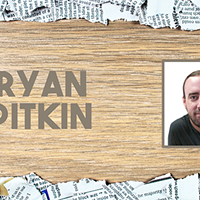
You're the Best... of Charlotte
Oct 27, 2018 -
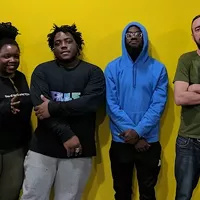
Listen Up: Cuzo Key and FLLS Go 'Universal' on 'Local Vibes'
Oct 25, 2018 -
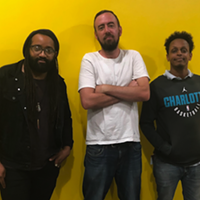
Listen Up: KANG is Back and Bla/Alt on 'Local Vibes'
Oct 18, 2018 - More »
Calendar
-

ANNIE LEIBOVITZ / WORK @ Mint Museum Uptown at Levine Center for the Arts
-

Trap & Paint + Music Bingo @ Blush CLT
-
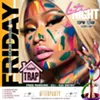
Trap & Paint (Hookah Edition) @ Blush CLT
-

BookTok Sensation RC Luna Comes to Charlotte – Author Signing Event @ The Trope Bookshop
- Sat., Aug. 30, 11 a.m.-1 p.m.
-
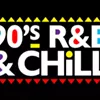
R&B Sip & Paint + Comedy Show @ Blush CLT









